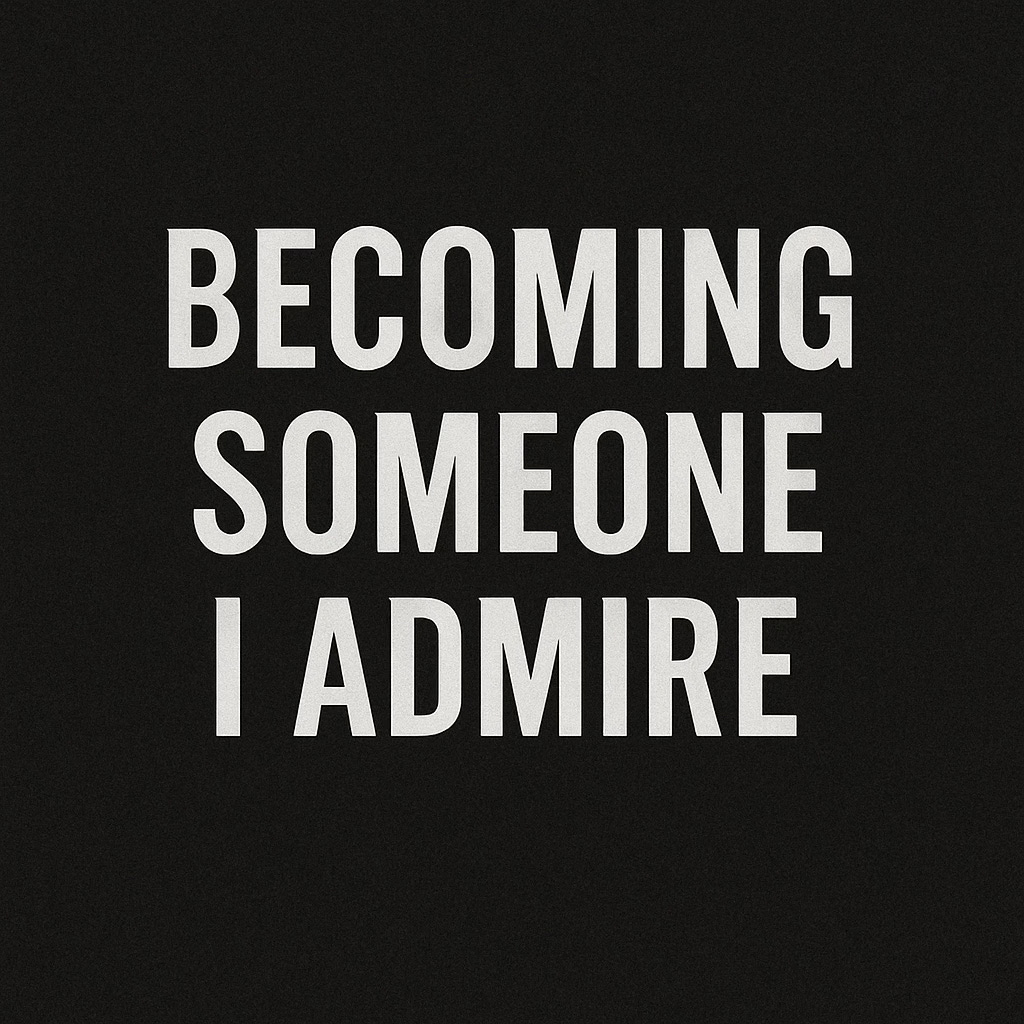Chapter 9 - Becoming Someone I Admire
From THX Series Hub: The Narcissist’s Playbook & The Life After
Healing After Narcissism, Part 6
(Framed by the Admiration Equation: Skill, Goodness, Awe, Gratitude)
Author’s Note: This post explores what it means to rebuild identity after abuse—not based on how others see you, but on who you choose to be. It draws from the Admiration Equation: a framework for becoming someone others admire—and someone you admire, too.
In the years I lived under narcissistic control, admiration was a weapon.
I was trained to admire the wrong things—
Charm without character. Achievement without empathy. Beauty without kindness.
I was praised for how much I could endure, how little I needed, how well I could disappear.
I was expected to admire her.
I was never expected to admire myself.
But slowly—after the silence, after the planning, after the rebuilding—something inside me asked:
What if I became someone I admire?
The Admiration Equation, in my work, is made of four parts:
Skill
Goodness
Awe
Gratitude
Here’s how each one came home to me.
1. Skill – I Did What Needed to Be Done
I didn’t just survive—I studied and memorized the narcissist playbook.
I knew what to expect. I anticipated her moves.
I gathered evidence. I navigated legal limitations.
I protected my daughters from the inside of the storm.
I closed most of my businesses so I could laser-focus on the one that mattered—TCX consulting.
Later, I took a full-time job with a client that gave me stability, benefits, freedom, and time to be fully present.
I did all this not for applause.
I did it because it was the right thing to do.
And now?
I see those skills clearly. I no longer downplay them.
I admire the man who was never reckless with what mattered.
2. Goodness – I Stayed Kind Without Losing Myself
Abuse can harden you.
But I chose something else: strength through softness.
I stayed kind to my daughters.
I stayed kind to myself.
I didn't retaliate—I rebuilt.
I created a home where no one had to earn love through performance.
Where being tired, emotional, or human was never punished.
I didn’t let pain rewrite my values.
I modeled gentleness without weakness.
Boundaries without cruelty.
Love without shame.
I admire the man who loved without controlling and walked away without destroying.
3. Awe – I Remembered That I Am Part of Something Bigger
Healing let me see beauty again.
I started studying art history, letting centuries of human expression remind me that I, too, could make something beautiful out of brokenness.
I created a Facebook group inviting others to share sunrise and sunset photos—to start and end their days with reverence. To witness awe.
I leaned into my own brilliance by expanding the frameworks I had built—TCX became THX:
From Transformational Customer Experience to Transform the Human Experience.
Because I realized:
What I had learned about customers was really a map for healing people.
I watched my daughters graduate.
And now I see them in college, studying what fulfills their souls—not what pleases others.
That’s awe. That’s legacy.
I admire the man who stopped chasing admiration and started creating space for it.
4. Gratitude – I Thank Every Version of Me
The man who stayed. The man who hid.
The man who doubted himself but protected others.
The man who slept on the couch, afraid to breathe.
The man who stayed silent until it was safe to speak.
I thank him.
Not because he got it all right.
But because he kept going.
He stayed alive long enough to build a life that finally made sense.
I admire the man who endured with integrity and led with love.
Becoming Someone I Admire
I used to wait for others to tell me I was good.
I used to measure my worth by how well I avoided being punished.
But not anymore.
Now, I see myself clearly.
Not inflated. Not distorted.
Just whole.
I became someone I admire.
And it didn’t happen by accident.
It happened through truth, presence, and choice.
And I want that for every survivor reading this.
Reflection Prompt
What would it mean to become someone you admire?
What’s one skill you’ve developed in silence?
What’s one act of goodness no one else saw but you?
What’s one moment of awe you created?
What’s one version of you you’re ready to thank?

Interpretation: The bold, centered typography against a dark background evokes confidence and clarity. This minimalist design reflects the quiet power of reclaiming identity after trauma—solid, grounded, and uncompromising.



